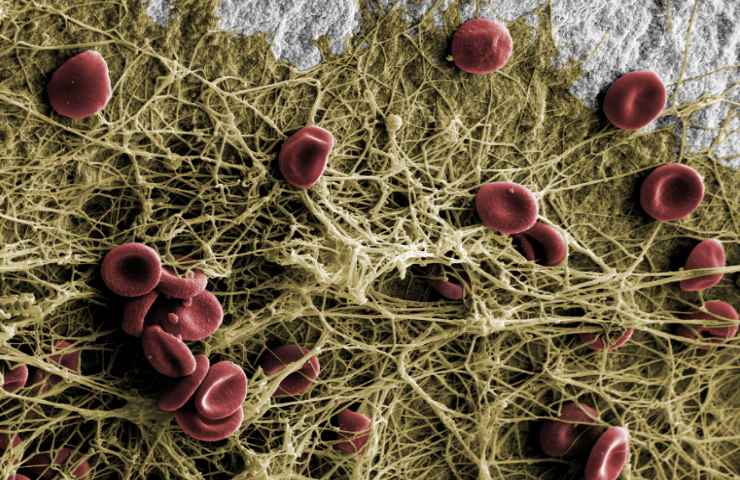An interview with Dr Sofia Karapataki, Greece
In collaboration with the University of Graz in Austria, Athens-based implantologist Dr Sofia Karapataki is currently preparing the publication of the results of a new retrospective study that provides long-term results on the health of hard and soft tissue around zirconia implants. In this interview, Dr Karapataki explains how periodontics and implantology go together in clinical practice, why she advocates ceramic implants as a healthier treatment option and why she relies on the Patent™ Dental Implant System when treating edentulous patients.
Dr Karapataki, you have been an active proponent of metal-free dentistry for quite some time now, and your practice is specialised in this regard. Do most of the patients in your region gravitate towards this kind of dental treatment?
Typically, new patients who visit my practice are not specifically looking for metal-free solutions but rather for a dental treatment to solve their oral health issues. This is changing, however, with all the information that exists on the internet and the steadily increasing number of people who are interested in their health and consciously looking for alternative treatment solutions. Unfortunately, according to the website of the European Commission on Public Health, the adult Greek population has one of the highest smoking rates in Europe and one of the highest rates of obesity too. These two significant health conditions pose grave challenges when it comes to resolving an oral disease like periodontitis and subsequent tooth loss. It is mainly for this reason that I am eager to reduce each patient’s toxicity profile the best I can and to promote a healthier rehabilitation of his or her condition.

What do you mean by a healthier rehabilitation? Aren’t dental treatments always healthy?
Naturally, traditional dentistry intends to heal and improve oral health. However, now that we have significant evidence regarding the long-term effect of certain metals and materials used in dentistry, we have to be aware that long-term exposure to some materials has undesired negative impacts on the immune and systemic health of some our patients. This view is backed, for instance, by a 2013 study by Dr Elisabeth Jacobi-Gresser et al., in which the authors report that microparticles released by titanium implants affect the immunological mechanism of the body and can possibly initiate peri-implantitis. With regard to our average patients who come to see us and who have lifestyle-related risk factors, we have to find ways to lower their toxicity profile or even eliminate their toxin exposure and to bolster their overall systemic health to overcome such long-term complications.
What’s your treatment approach to replacing missing teeth?
I have been placing dental implants for the last 27 years. I learned about zirconia implants ten years ago, and I’ve been placing only zirconia implants for the last eight years. During and after my implantological training in Sweden, I replaced missing teeth primarily with titanium implants. In spite of all my efforts to follow up and maintain my dental implant patients, unfortunately I was faced with the occurrence of peri-implant inflammation and—in the worst cases—peri-implantitis on a regular basis.
No matter how thorough my follow-up and post-treatment maintenance was, it seemed inevitable that, with a growing patient pool, the frequency of these problems would increase too over time. This, combined with my personal interest in understanding the immunological behaviour of patients in response to various dental materials, has led to me using zirconia implants only.


What makes a zirconia implant healthy in your eyes?
Zirconia is a ceramic material devoid of any metal properties. It is electrochemically inert, causing no galvanising nor electrical current negative effects at an inter- or intracellular level. It is a fully bio-inert material and the most biocompatible implant material that is currently available on the market, and no allergies to or intolerances of it have been reported. The material as such exhibits lower surface free energy, which leads to reduced biofilm accumulation, which is the basis for plaque formation. The lower levels of bacterial accumulation result in better soft- and hard-tissue adaptation, not only making the surrounding tissue look healthier and more aesthetic, but also allowing for long-term healing stability and predictability.
Your upcoming publication will present long-term results regarding the peri-implant health around zirconia implants. What can you tell us about that?
For roughly the last eight years, I have been treating my patients exclusively with the Patent™ Dental Implant System (Zircon Medical Management), formally known as ZV3. The implant possesses some special features in terms of its design and production, which have been really helpful in the treatment of my patients. Beyond the implants that I place myself in my private practice, I have been following over 90 Patent™ implants for five to 12 years of function in collaboration with Dr Harald Fahrenholz from Vienna, and I’ve been meticulously tracking the soft-tissue performance around them. In addition to their highly reliable osseointegration, I discovered significant soft-tissue benefits and stability over this period. I am excited about my collaboration with the University of Graz, which has reviewed my data and concluded that there is compelling evidence that zirconia offers long-term health benefits for all types of patients who are looking for tooth replacement solutions. The results will be published soon under the title “Results of zirconia implants after five years of clinical performance—a retrospective study”.
What advice would you give young dentists who are just starting their journey in implantology?
I would advise young implantologists to pay attention to the integrity of the research that supports the clinical choices that they are making. They should scrutinise the material that product manufacturers provide to them and take an in-depth look at peer-reviewed long-term clinical evidence to give them an indicator of what they can expect when their patient base starts to grow. I think it’s important to challenge the claims that are being made and to make sure that one can offer the highest standards of quality and safety to one’s patients. Ultimately, one has to help patients to become healthier, and one can only do this with products that are not only scientifically proven but also safe for the whole of the human body.
Watch the video here: https://www.mypatent.com/optimum-biology
For more information on the Patent™ Dental Implant System go to: www.mypatent.com
